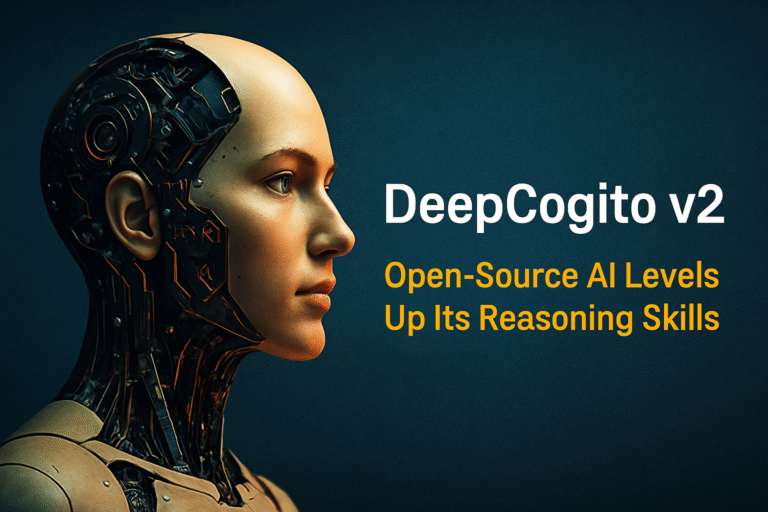
Imagine controlling your smartphone, typing messages, or even driving a car using only your thoughts. This is not science fiction anymore—it’s the promise of Brain-Computer Interfaces (BCI). In early 2025, Neuralink, the company founded by Elon Musk, successfully implanted its first human BCI device, sparking a massive wave of discussions about the future of human-AI interaction.
BCI technology has the potential to transform medicine, communication, and even how we interact with technology. But how far have we really come? And what are the biggest breakthroughs beyond Neuralink? In this article, we will explore the top BCI advancements, how they work, and what the future holds for these revolutionary devices.
What is a Brain-Computer Interface (BCI)?
A Brain-Computer Interface (BCI) is a system that allows the brain to communicate directly with external devices without using muscles or speech. BCIs work by reading neural signals and translating them into commands that can control computers, prosthetic limbs, or even entire smart environments.
Types of BCIs
BCIs are categorized based on their invasiveness:
- Invasive BCIs – Implanted directly into the brain for high-precision communication. (e.g., Neuralink)
- Partially Invasive BCIs – Placed on the brain’s surface but do not penetrate brain tissue.
- Non-Invasive BCIs – Use external sensors (EEG headsets) to detect brain activity without surgery.
Neuralink is at the forefront of invasive BCIs, while other companies are developing non-invasive solutions for mass adoption.
Neuralink: The Most Advanced BCI Implant?
Neuralink has developed a coin-sized BCI chip called “Telepathy”, which was successfully implanted in a human patient in January 2025.
How Does Neuralink Work?
- Implantation: The chip is implanted in the brain via a robot-assisted surgery to ensure precision.
- Data Transmission: It reads neural signals and sends them wirelessly to a device (e.g., smartphone).
- AI Processing: Neuralink’s AI deciphers these signals into actions, allowing users to control technology with their thoughts.
🔹 Real-World Applications of Neuralink:
- Restoring mobility – Helping paralyzed individuals regain movement.
- Speech restoration – Enabling non-verbal people to communicate via AI-powered speech synthesis.
- Smart device control – Allowing users to operate phones, computers, or even robotic limbs using thoughts.
📌 Related Article: Revolutionary AI Technologies of 2025 – Top Innovations Shaping the Future
Top BCI Innovations Beyond Neuralink
While Neuralink is leading in invasive BCIs, several companies are making major breakthroughs in non-invasive and wearable BCI technology.
| Company | BCI Type | Key Features | Use Cases |
|---|---|---|---|
| Neuralink | Invasive | Brain implant, AI interpretation, wireless link | Mobility, speech, device control |
| Synchron | Minimally invasive | Stentrode BCI (inserted via blood vessels) | Stroke recovery, prosthetic control |
| NextMind (Snap) | Non-invasive | EEG-based BCI, external wearable device | Gaming, AR/VR control |
| Kernel Flow | Non-invasive | Functional near-infrared spectroscopy (fNIRS) | Neuroscience research, wellness |
| Emotiv | Non-invasive | EEG headset for real-time brain activity tracking | Meditation, cognitive training |
Each of these companies is tackling different aspects of BCI technology, from medical applications to enhanced human-computer interactions in gaming, VR, and beyond.
The Future of BCIs: What’s Next?
1. AI-Enhanced BCIs
AI will play a crucial role in improving signal decoding and making BCIs faster and more intuitive. Future systems could integrate personalized AI models that learn from a user’s thoughts to provide seamless control over technology.
2. Wireless BCIs for Everyday Use
One of the biggest challenges for BCIs is making them more accessible. Companies are working on non-invasive, wireless BCIs that don’t require surgery but still offer high accuracy and real-time processing.
3. Brain-to-Brain Communication
Some experts believe BCIs could enable direct communication between humans through brain signals, leading to telepathic-like interactions.
4. Ethical & Security Challenges
While the potential benefits of BCIs are enormous, they also raise ethical questions:
🔹 Mind privacy – Could hackers access someone’s thoughts?
🔹 AI control – How much power should AI have over interpreting brain activity?
🔹 Tech dependency – Could BCIs change human behavior and interactions permanently?
Regulations will be essential to ensure that BCI technology is used safely and ethically in the coming years.
📌 Related Article: How AI Will Transform the Automotive Industry – Autonomy, Safety, and Efficiency
Conclusion: Are We Ready for the BCI Revolution?
Brain-Computer Interfaces are moving from experimental labs to real-world applications, with Neuralink’s first human trials marking a turning point in human-technology integration. While BCIs still face technical and ethical challenges, the rapid progress of AI, neuroscience, and wireless technology suggests that mass adoption is closer than we think.
Would you use a BCI device to control your tech with your thoughts? Let us know in the comments! 🚀




Rattling excellent information can be found on site. “You have to learn that if you start making sure you feel good, everything will be okay.” by Ruben Studdard.
I like the valuable information you provide in your articles. I will bookmark your blog and check again here regularly. I am quite sure I’ll learn many new stuff right here! Good luck for the next!
You got a very great website, Gladiola I found it through yahoo.
With havin so much content and articles do you ever run into any problems of plagorism or copyright infringement? My blog has a lot of unique content I’ve either created myself or outsourced but it seems a lot of it is popping it up all over the internet without my authorization. Do you know any solutions to help prevent content from being stolen? I’d really appreciate it.
Hey are using WordPress for your blog platform? I’m new to the blog world but I’m trying to get started and create my own. Do you require any coding knowledge to make your own blog? Any help would be really appreciated!
It is perfect time to make a few plans for the future and it’s time to be happy. I have learn this publish and if I may I wish to counsel you few interesting things or tips. Maybe you could write next articles relating to this article. I want to learn more things approximately it!
Greetings! I’ve been reading your web site for a while now and finally got the bravery to go ahead and give you a shout out from Lubbock Tx! Just wanted to say keep up the good job!
Today, while I was at work, my cousin stole my apple ipad and tested to see if it can survive a twenty five foot drop, just so she can be a youtube sensation. My iPad is now broken and she has 83 views. I know this is totally off topic but I had to share it with someone!
Greetings! Very helpful advice on this article! It is the little changes that make the biggest changes. Thanks a lot for sharing!
This actually answered my downside, thank you!
F*ckin¦ tremendous issues here. I¦m very glad to see your article. Thank you a lot and i’m looking ahead to touch you. Will you kindly drop me a e-mail?
Thank you for the sensible critique. Me and my neighbor were just preparing to do a little research on this. We got a grab a book from our local library but I think I learned more from this post. I’m very glad to see such wonderful info being shared freely out there.
I like what you guys are up also. Such clever work and reporting! Keep up the excellent works guys I have incorporated you guys to my blogroll. I think it will improve the value of my website 🙂
Hi, just required you to know I he added your site to my Google bookmarks due to your layout. But seriously, I believe your internet site has 1 in the freshest theme I??ve came across. It extremely helps make reading your blog significantly easier.
obviously like your web-site but you need to take a look at the spelling on several of your posts. A number of them are rife with spelling issues and I to find it very bothersome to tell the truth then again I will definitely come again again.
I’m curious to find out what blog system you are utilizing? I’m having some small security issues with my latest site and I would like to find something more secure. Do you have any suggestions?
I’m now not certain the place you are getting your information, but great topic. I must spend some time finding out much more or figuring out more. Thanks for magnificent info I used to be looking for this info for my mission.
Do you mind if I quote a few of your articles as long as I provide credit and sources back to your website? My blog site is in the very same niche as yours and my users would genuinely benefit from a lot of the information you provide here. Please let me know if this ok with you. Many thanks!
I besides believe hence, perfectly pent post! .
Thank you for sharing excellent informations. Your website is so cool. I’m impressed by the details that you¦ve on this website. It reveals how nicely you understand this subject. Bookmarked this web page, will come back for extra articles. You, my friend, ROCK! I found just the info I already searched everywhere and simply could not come across. What a great site.
Enjoyed looking at this, very good stuff, appreciate it.
I’ve been exploring runtz terpenes recently, and I’m deep down enjoying the experience. The scents are rich, real, and pleasant. They annex a discriminative caress to my day after day routine, plateful set the mood and atmosphere. A large hit upon after anyone who appreciates savoury wellness tools.
Thanks, I’ve just been looking for info approximately this subject for ages and yours is the best I have found out so far. But, what concerning the bottom line? Are you positive in regards to the source?
you are really a good webmaster. The site loading speed is amazing. It seems that you are doing any unique trick. Moreover, The contents are masterwork. you’ve done a magnificent job on this topic!
I have been absent for some time, but now I remember why I used to love this web site. Thank you, I?¦ll try and check back more often. How frequently you update your website?
Thanks for this marvellous post, I am glad I noticed this site on yahoo.
Howdy just wanted to give you a quick heads up. The words in your post seem to be running off the screen in Safari. I’m not sure if this is a format issue or something to do with internet browser compatibility but I thought I’d post to let you know. The design look great though! Hope you get the issue resolved soon. Kudos
Good write-up, I?¦m regular visitor of one?¦s blog, maintain up the excellent operate, and It is going to be a regular visitor for a long time.
Hi there! This is my first comment here so I just wanted to give a quick shout out and tell you I really enjoy reading through your blog posts. Can you recommend any other blogs/websites/forums that cover the same subjects? Thanks!
I tried a few products from Tillmans Tranquils – Relax Gummies and really liked the entire experience. The gummies contain a deplete b empty leaning, undisturbed configuration, and consistent quality. The flavors perceive reasonable, and the portioned servings up it amenable to prefer what works in return you. Their packaging looks premium and everything feels thoughtfully made. A unshakeable make with products that are enjoyable and reliable.